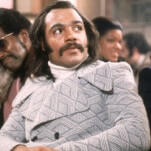As a forward-thinking art collector in the 1920s, Dr. Albert Barnes snapped up an extraordinary wealth of post-impressionist and modernist paintings from the likes of Matisse, Picasso, Renoir, and Cezanne; though dismissed by tastemakers at the time, his collection is now valued in the tens of billions. In his will, Barnes was specific about what the trustees were to do with his assets: He wanted them to remain housed in his small, meticulously conceived institution in the Philadelphia suburb of Merion, never to be loaned out or sold to other museums. He wanted the Barnes trustees to continue his educational mission. And most of all, he wanted to make sure the corporate foundations and politicians in Philly didn’t get their grubby paws on it.
Don Argott’s gripping documentary The Art Of The Steal is about how Barnes’ seemingly ironclad wishes were withered away by unscrupulous trustees, coffer-draining legal battles, and the overwhelming force of a city looking to bring in the tourist dollar. There are two sides of the story—the other being that the Barnes Foundation simply didn’t have the capital to be a sustainable entity—but the film makes its allegiances clear. And that isn’t a bad thing: In this David-and-Goliath story, Goliath kicks the ever-loving shit out of David, and the film is convincing and righteous in its advocacy. It also leaves behind some troubling questions about the runaway commoditization of art, the extent to which it does or does not belong the public, and just how much power the individual really has in society. Argott (Rock School) doesn’t add much new information to a story that’s played out in headlines and editorial pages for decades, but The Art Of The Steal consolidates it into a damning example of justice bending toward those who can most afford to buy it.








































